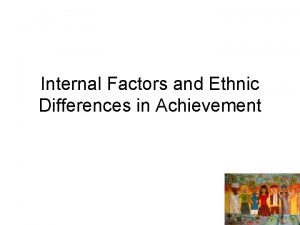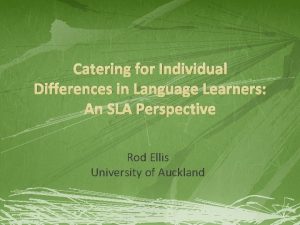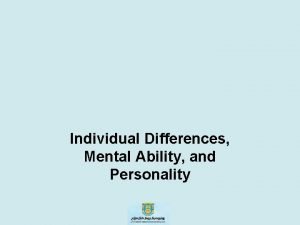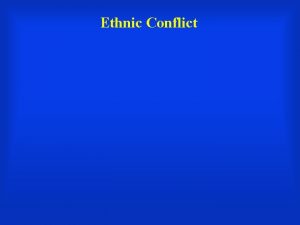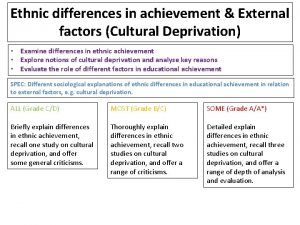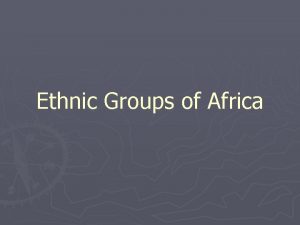Internal Factors and Ethnic Differences in Achievement The








- Slides: 8

Internal Factors and Ethnic Differences in Achievement

The Ethnocentric Curriculum • What is ethnocentric? • Definition: Ethnocentric describes an attitude or policy that gives priority to the culture and viewpoint of one particular ethnic group while disregarding the others

The Ethnocentric Curriculum • How is the national curriculum ethnocentric? • Troyna & Williams (1986): gives priority to white culture & English language • Miriam David: describes NC as ‘specifically British’ as it teaches culture of ‘host community’ while largely ignoring non-European languages, literature & music • Stephen Ball: ‘little Englandism’; history tries to recreate ‘mythical age of empire & past glories’ ignoring the history of black & Asian people.

The Ethnocentric Curriculum • How might an ethnocentric curriculum create underachievement? • Bernard Coard (2005) gives example of history, where British presented as bringing civilisation to ‘primitive’ people they colonised; image of black people as inferior undermines black children’s self-esteem & may lead to failure • Impact unclear: NC ignores Asian culture, yet Indian & Chinese pupils’ achievement above national average.

The Ethnocentric Curriculum • What is institutional racism? You may want to compare it to individual racism? • Individual racism: results from prejudice views of individuals • Institutional racism: built into the way institutions such as schools & colleges operate • Troyna & Williams (1986) argue that ethnocentric curriculum is example of institutional racism, e. g. meagre provision for teaching Asian languages is racial bias built into everyday working of schools & colleges • Hatcher (1996) looked at schools’ governing bodies and found often no formal channels of communication between school governors & ethnic minority parents, resulting in nothing done about their specific concerns, such as language support

Selection & Marketisation How might this put ethnic minorities at a disadvantage? School gets better results Can ‘cream skim’ more able pupils Can ‘silt-shift’ less able pupils to less successful schools Increased funding and more facilities School becomes more popular

Selection & Marketisation • Gillborn (1997): selection gives more scope for negative stereotypes to influence decisions about school admissions • Moore & Davenport (1990): – Discrimination against ‘problem students’ – use of primary school reports to screen out pupils with language or learning difficulties – Application process difficult to understand for non. English speakers or less educated parents – Ethnic stratification

Selection & Marketisation • Commission for Racial Equality (1993) identified bias of British education system: – Reports from primary schools that stereotype minority pupils – Racist bias in interviews for school places – Lack of information and application forms in minority languages – Ethnic minority parents often unaware of how waiting list system works and importance of deadlines
